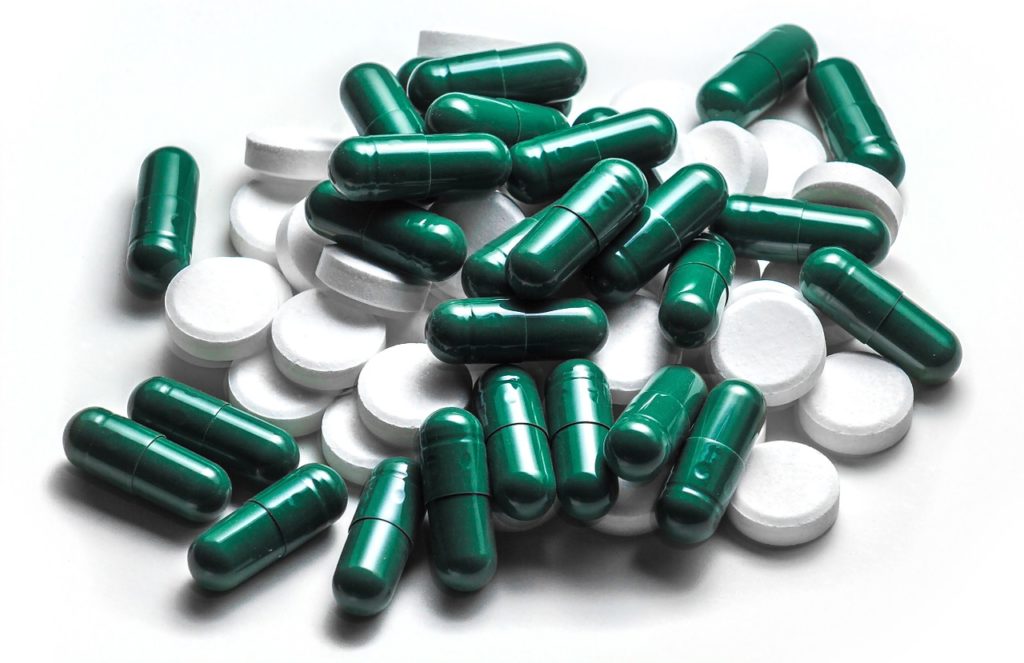
Even though the U.S. makes up only an estimated 5 percent of the world’s population, the National Institute on Drug Abuse (NIDA) claims that the U.S. still manages to consume 81 percent of the world’s supply of oxycodone. [1]
A drug that is so avidly marketed and consumed, it is important to take a look at its good, bad and ugly.
Oxycodone vs. OxyContin
The foremost active element of OxyContin is oxycodone, but OxyContin (the brand name) is characterized by a time-release mechanism, which means the drug is gradually released in the body over certain duration and the drug needs to be consumed less often.
Oxycodone was originally developed in efforts to find non-addictive alternatives to other drugs commonly used in medicine before and during World War I.
 Regular oxycodone is an immediate-release drug, an opioid narcotic painkiller used to treat moderate to severe pain, alongside managing breakthrough or acute excessive pain in patients who are treated for chronic pain.
Regular oxycodone is an immediate-release drug, an opioid narcotic painkiller used to treat moderate to severe pain, alongside managing breakthrough or acute excessive pain in patients who are treated for chronic pain.
OxyContin yields identical pain-relief results but is used to treat chronic pain.
It is not effective for immediate pain relief, such as in case of an emergency use.
The “Good” Use of Painkillers
The opiates, being powerful analgesics, are highly valued in the field of medicine. They are effectively utilized in the treatment of visceral pain, pain caused as a result of cancer and moderate to severe chronic pain caused from surgery or trauma.
It is essentially the pharmacology of these opiates that render analgesia and less gastrointestinal irritations as caused by N.S.A.I.D.S (Non-Steroidal Anti Inflammatory Drugs).
The analgesic effect of these drugs is essentially an imitation of the action of endogenous peptides endorphins, dynorphins and enkephalins that acts on various opiate receptors. Pharmacologically, these drugs are categorized as “Opioid Receptor Agonists.” [2]
The “Bad” and Harmful Side Effects
Despite the numerous obvious advantages, these drugs are associated with numerous drug interactions, alongside several quantitative and qualitative repercussions that occur even at minimum doses. Oxycodone (the active ingredient contained in OxyContin) may cause unwanted and unpleasant side effects that may even require medical attention.
The most commonly reported adverse reactions in adults include constipation, nausea, somnolence, dizziness, vomiting, pruritus, headache, dry mouth, asthenia, and sweating. In pediatric patients, the most frequently observed adverse reactions include vomiting, nausea, headache, pyrexia, and constipation.
In pediatric studies with the oral extended release product, negative consequences for the gastrointestinal system were reported in around 40 percent of the patients, aged 11 to 16 years.
 These repercussions were largely characterized by vomiting in 21 percent of the patients, nausea experienced by 15 percent, 9 percent experienced constipation and 6 percent suffered from diarrhea. Abdominal pain and gastroesophageal reflux disease were reported in 1 to 5 percent of patients. [3]
These repercussions were largely characterized by vomiting in 21 percent of the patients, nausea experienced by 15 percent, 9 percent experienced constipation and 6 percent suffered from diarrhea. Abdominal pain and gastroesophageal reflux disease were reported in 1 to 5 percent of patients. [3]
Although not commonly reported, a few other side effects of opioid use include disruptions in the nervous system, metabolism, the dermatologic affairs and the respiratory system.
The “Ugly” Realities of Opioid Addiction
According to a National Survey on Drug Use and Health, OxyContin has been abused by 7 million Americans over the last 20 years. The drug is widely blamed for setting off the nation’s prescription opioid epidemic, which has claimed more than 190,000 lives from overdoses involving OxyContin and other painkillers since 1999.
When oxycodone is consumed or abused for a long time, the repercussions can be quite severe. The high abuse potential for these drugs is due to the euphoric feelings their consumption results in. Long-term abuse can cause:
- Physical Dependence
- Compulsive behavioral tendencies or cravings
- Increased risk of Hepatitis or AIDS from exchanging syringes for IV use
- Greater tolerance
- Drug overdose toxicity
- A toll on financial and social aspects of life
- Premature delivery for using pregnant women
The clinical presentation of the opioid toxidrome (triad) is categorized by CNS depression (coma), miosis, and respiratory depression that are typically accompanied by a frothy, non-cardiogenic, pulmonary edema responsible for the majority of fatalities.
The above symptoms are usually reversed by emesis, gastric lavage and administering opioid antagonist like Naloxone, Naltrexone and Nalmefene.
Previously, oxycodone and other opiate drugs were prescribed with less frequency, strictly to treat short-term pain. Gradually, however, fluctuations in government recommendation and aggressive advertisements by pharmaceutical companies dramatically increased the number of prescriptions over the last 25 years.
The research paper, The Promotion and Marketing of OxyContin: Commercial Triumph, Public Health Tragedy, authored by Dr. Art Van Zee, explains how Purdue, the manufacturers of OxyContin, deliberately underrepresented the potential of addiction with OxyContin to increase sales.
In 2007, Purdue pled guilty to criminal charges of misbranding OxyContin and were fined $634 million. [4]
Prescription drug abuse of opioids like oxycodone has now surpassed that of cocaine or heroin. When an OxyContin pill is crushed, around 68 percent of the oxycodone is extractable. Hence, drug abusers typically crush the OxyContin tablet and consume it by inhaling, swallowing or injecting it to attain an intense high.
Being Careful in Your Use of Oxycodone
 OxyContin still remains widely popular as 5.4 million prescriptions were issued for the painkiller in 2014.
OxyContin still remains widely popular as 5.4 million prescriptions were issued for the painkiller in 2014.
Even though Purdue markets OxyContin to provide relief for 12 hours, an L.A. Times investigation found that relief barely lasted 8 hours for most patients.
This is particularly troublesome since higher or more frequent doses of the drug can result in highly uncomfortable withdrawal effects.
It is extremely important for all patients and consumers to follow the prescribed guidelines set by their health professionals regarding the dosage and use of OxyContin/oxycodone. Any resulting withdrawal symptoms, lack of efficacy of the dose or any other repercussions need to be immediately discussed with your doctor.
 About the Author:
About the Author:
A journalist and social media savvy content writer with wide research, print and on-air interview skills, Sana Ahmed has previously worked as staff writer for a renowned rehabilitation institute focusing on mental health and addiction recovery, a content writer for a marketing agency, an editor for a business magazine and been an on-air news broadcaster.
Sana graduated with a Bachelors in Economics and Management from London School of Economics and began a career of research and writing right after. The art of using words to educate, stir emotions, create change and provoke action is at the core of her career, as she strives to develop content and deliver news that matters.
References:
[1] http://drugabuse.com/library/oxycodone-history-and-statistics/
[2] https://www.academia.edu/11985939/OPIOIDS_THE_GOOD_THE_BAD_AND_THE_UGLY?auto=download
[3] https://www.drugs.com/sfx/oxycontin-side-effects.html
[4] http://www.diffen.com/difference/OxyContin_vs_Oxycodone
[5] http://www.latimes.com/projects/oxycontin-part1/
The opinions and views of our guest contributors are shared to provide a broad perspective of addictions. These are not necessarily the views of Addiction Hope, but an effort to offer discussion of various issues by different concerned individuals.
We at Addiction Hope understand that addictions result from a combination of environmental and genetic factors. If you or a loved one are suffering from an addiction, please know that there is hope for you, and seek immediate professional help.
Published on July 19, 2017.
Reviewed By: Jacquelyn Ekern, MS, LPC on July 19,, 2017
Published on AddictionHope.com
